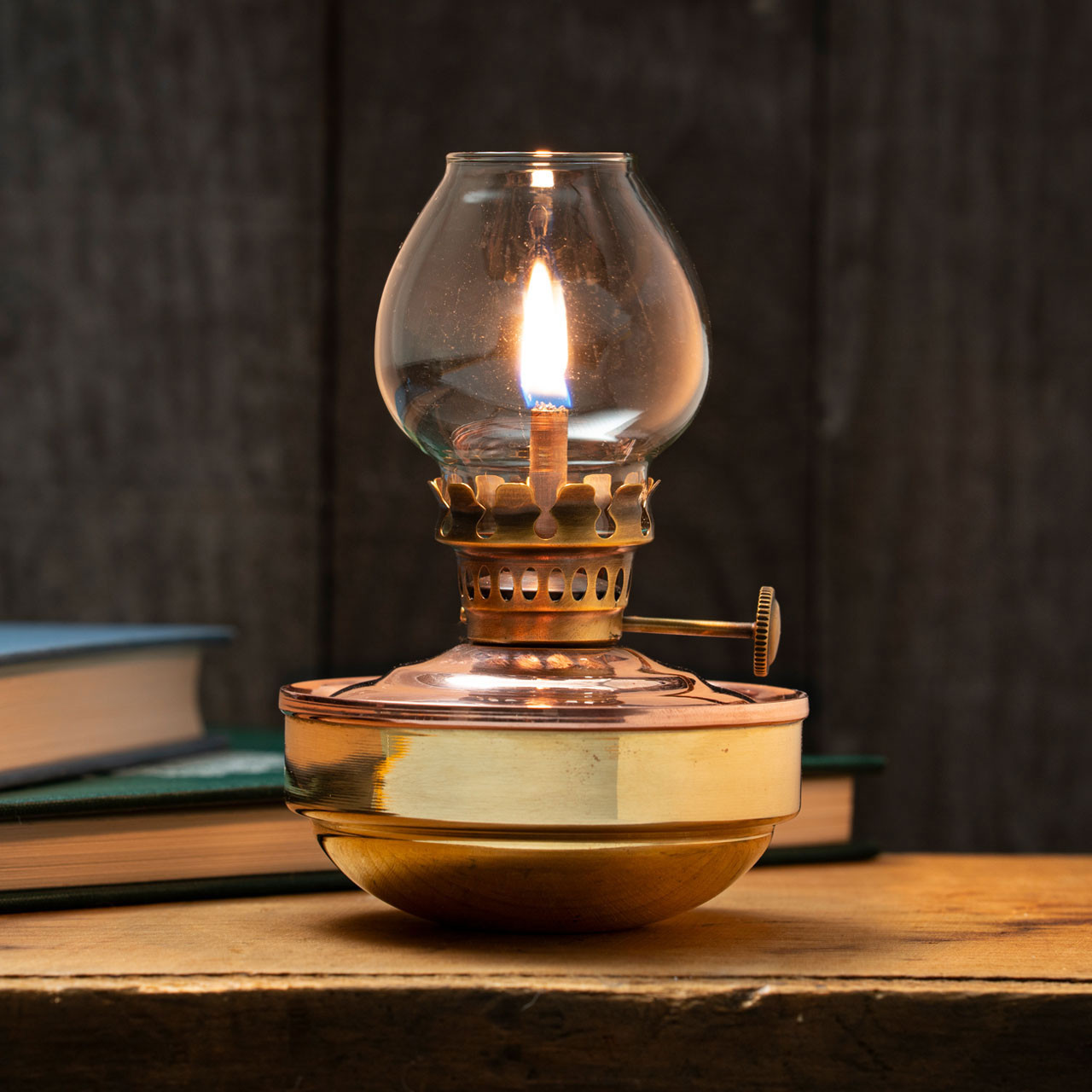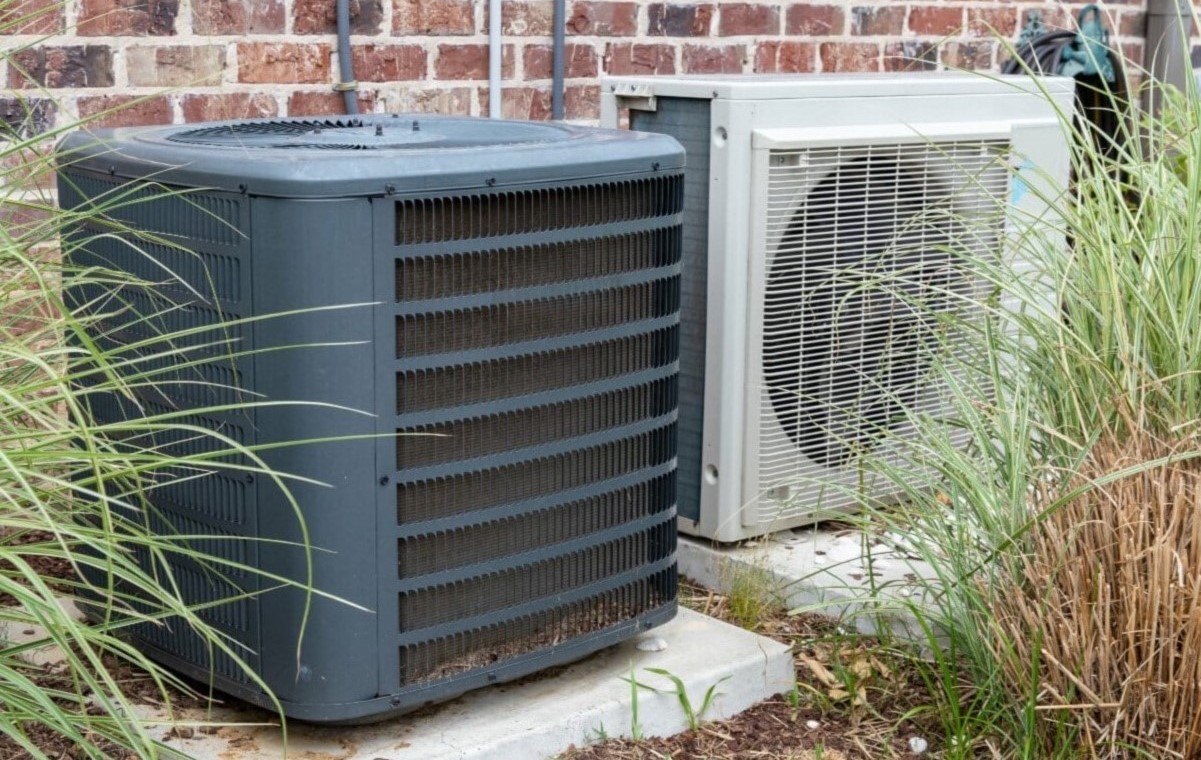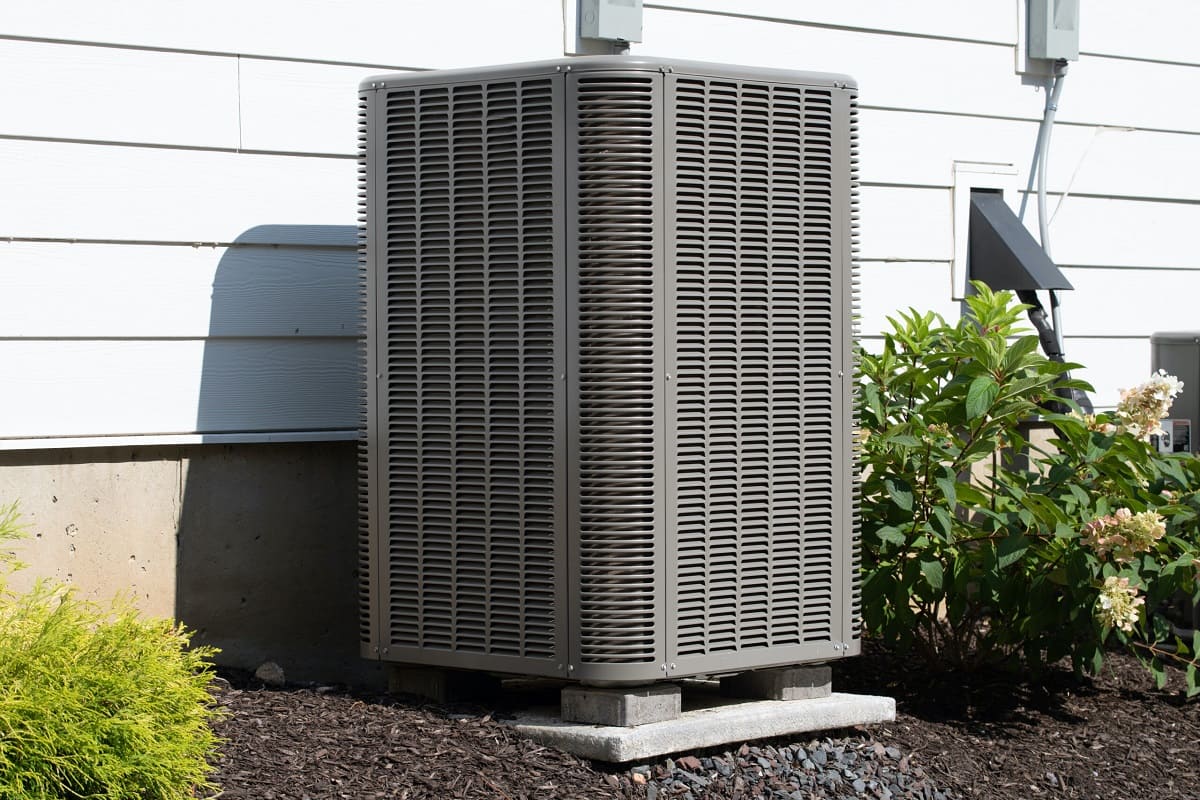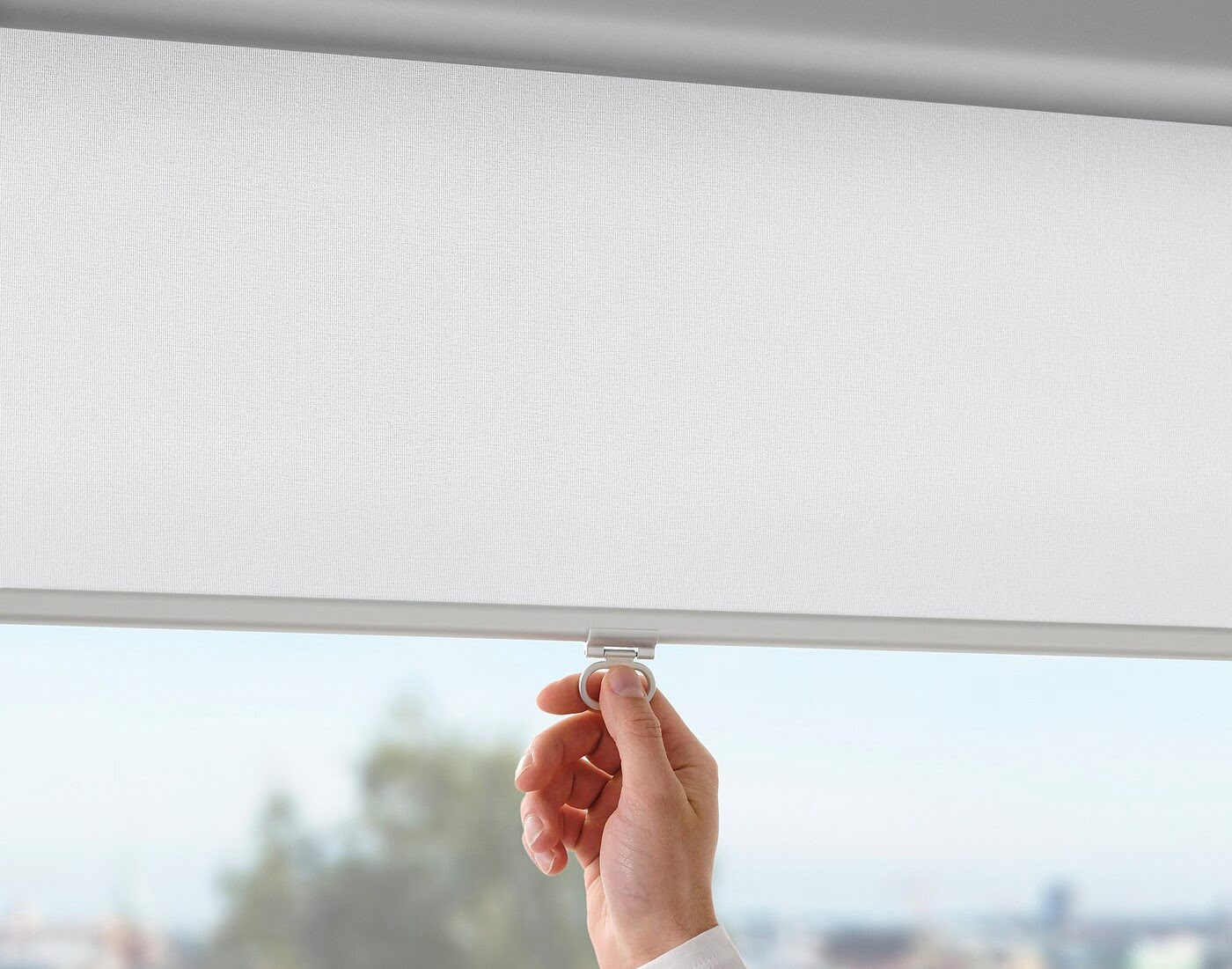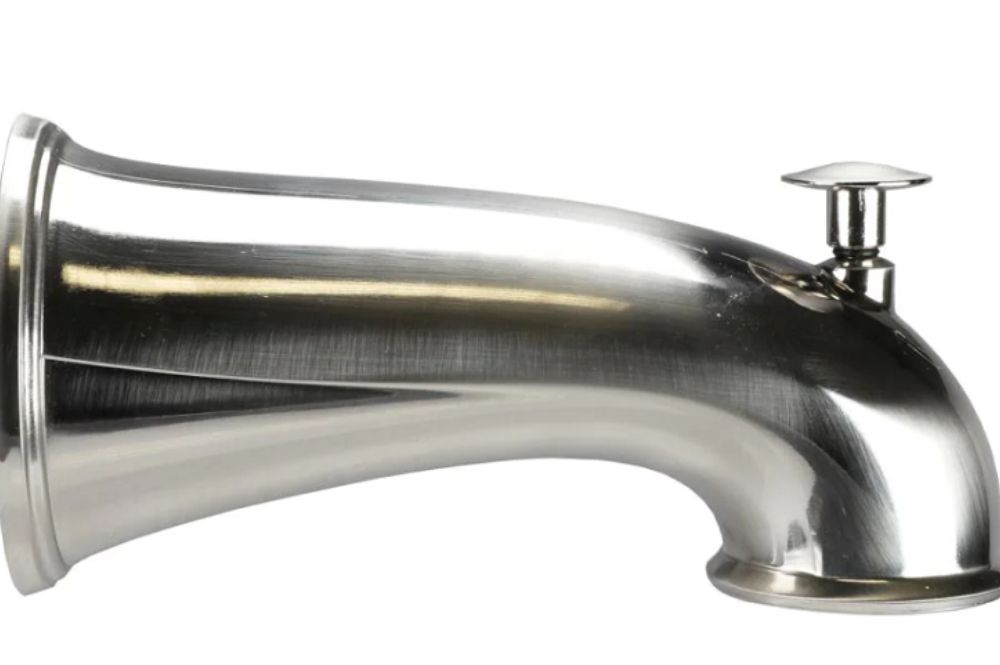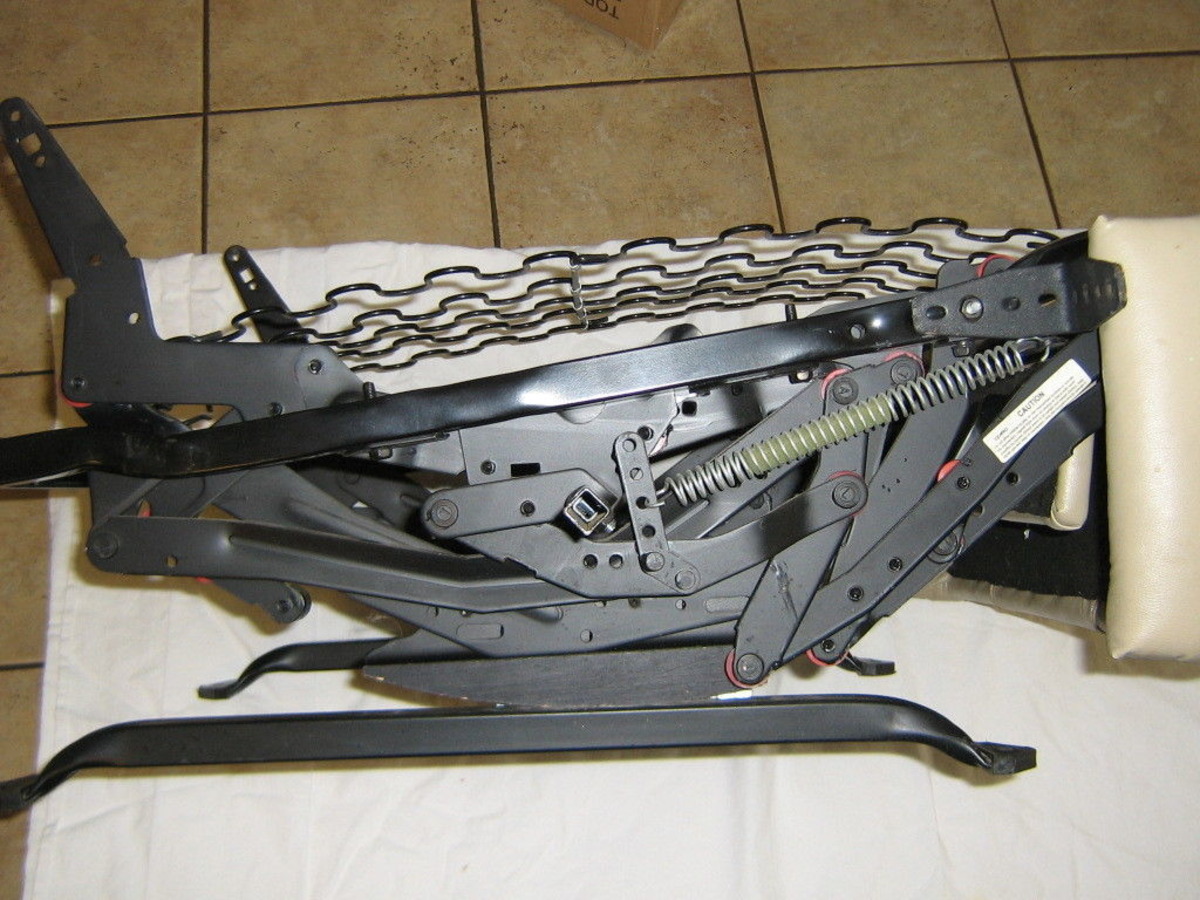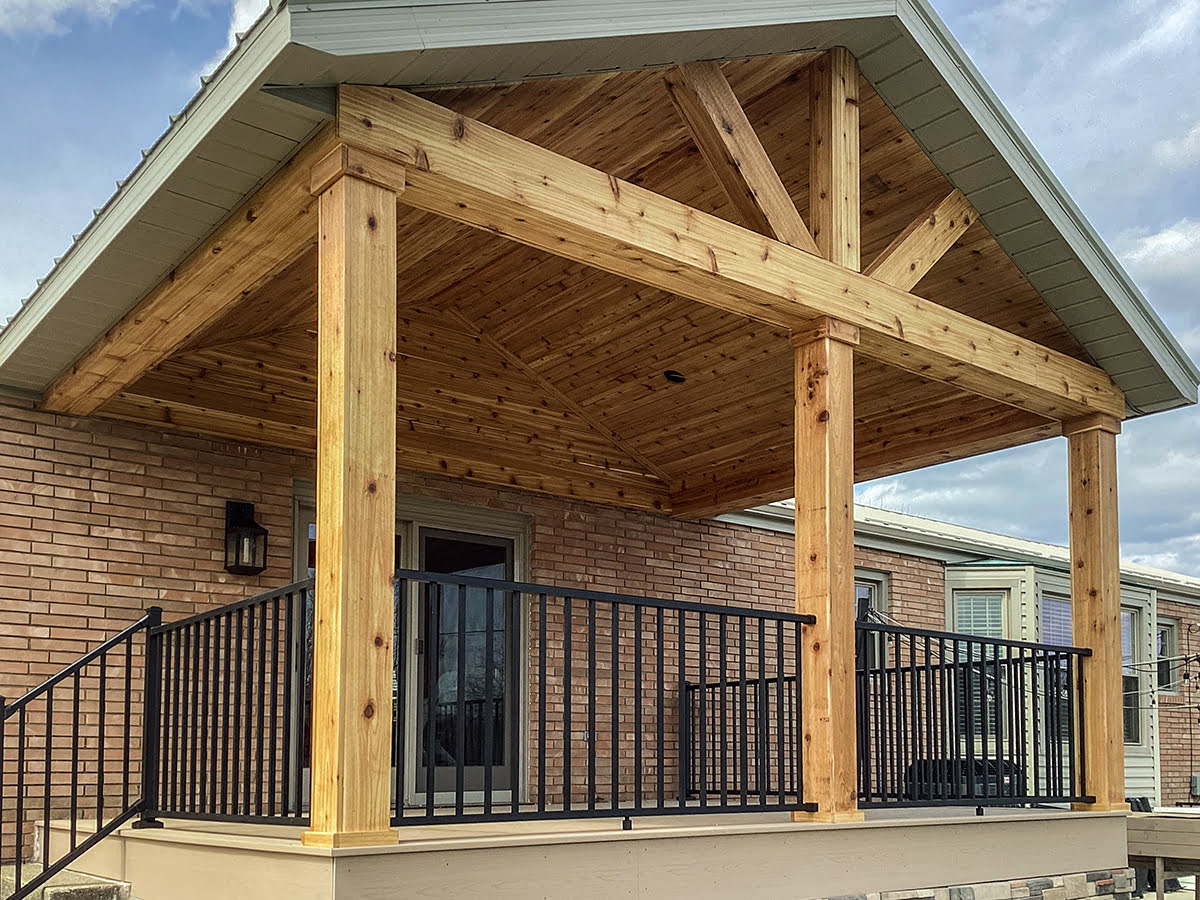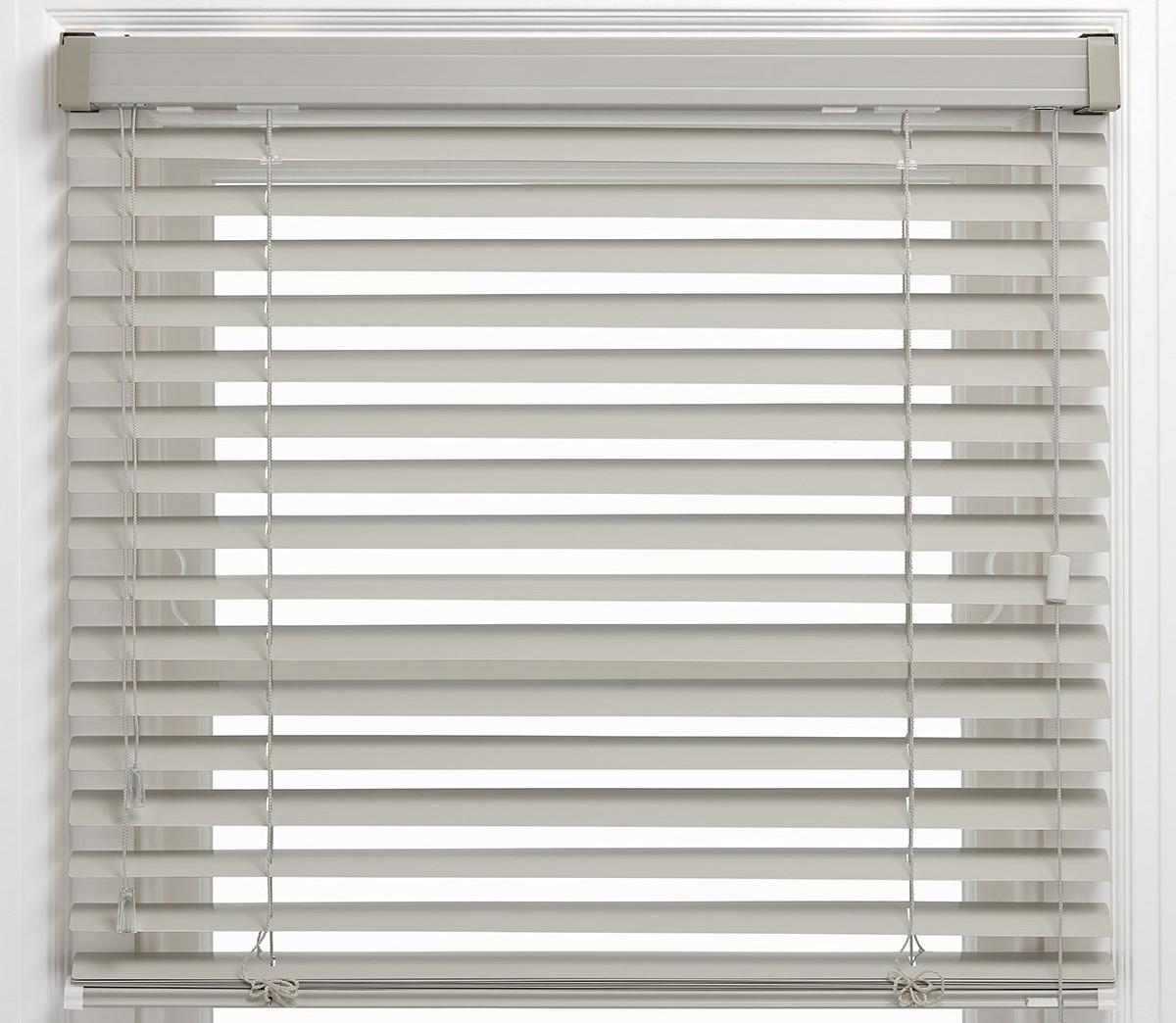

Articles
What Are The Parts Of Blinds Called
Modified: September 1, 2024
Learn about the different components of blinds and their names in this informative guide. Explore our articles for more insights into blinds.
(Many of the links in this article redirect to a specific reviewed product. Your purchase of these products through affiliate links helps to generate commission for Storables.com, at no extra cost. Learn more)
Introduction
Blinds are an essential component of any window treatment, providing privacy, light control, and aesthetic appeal to a room. They come in various styles and materials, each with its own unique features and benefits. Understanding the different parts of blinds is crucial in order to make informed decisions when choosing and installing them.
In this article, we will explore the various components of blinds, from the headrail to the mounting brackets. By delving into the anatomy of blinds, you will have a better understanding of how they function and how to maintain them effectively.
So, let’s dive in and discover the different parts of blinds and their significance.
Key Takeaways:
- Blinds are a versatile window treatment with components like slats, headrail, and lift cord, offering both functionality and aesthetic appeal. Understanding these parts is crucial for informed decision-making and effective maintenance.
- The installation process for blinds involves measuring, choosing the mounting option, installing brackets, attaching the headrail, hanging the blinds, and securing and trimming cords. Following these steps ensures a successful installation and optimal functionality.
Read more: What Are The Parts Of The Faucet Called?
Headrail
The headrail is the topmost part of the blind and plays a crucial role in supporting and guiding the entire blind system. It is typically made of metal or durable plastic and is designed to provide stability and smooth operation.
Within the headrail, you will find the mechanism that controls the raising and lowering of the blinds. This mechanism can vary depending on the type of blinds you have, such as a corded system or a wand tilt control.
Most modern blinds feature a sleek and compact headrail design that blends seamlessly with the window frame and surrounding décor. The size and style of the headrail may vary depending on the complexity and weight of the blind.
Some advanced blinds also come with innovative features integrated into the headrail, such as motorized operation and remote control compatibility. These features offer convenience and ease of use, allowing you to adjust the blinds effortlessly with a touch of a button.
Overall, the headrail is an essential part of blinds that provides structural support, houses the control mechanisms, and contributes to the overall aesthetics of the window treatment.
Slats
Slats are the horizontal, parallel components of blinds that are responsible for regulating the amount of light and privacy in a room. They are typically made of materials such as wood, vinyl, aluminum, or fabric, and are available in various widths and finishes to suit different styles and preferences.
The slats can be angled or adjusted to control the amount of light entering the room. Tilting the slats upwards allows more light to filter in, while tilting them downwards helps create privacy and blocks out light. The ability to adjust the slats makes blinds a versatile window treatment option for any setting.
Slats come in different sizes, usually ranging from 1/2 inch to 2 inches wide. The wider the slats, the more light they can block when fully closed. The choice of slat width depends on factors such as the size of the window, the desired level of light control, and the style of the room.
In addition to their functional purpose, slats also contribute to the aesthetic appeal of the blinds. They can be smooth or textured, and come in a wide range of colors and finishes to complement the overall décor of the room.
When selecting blinds with slats, it’s important to consider the material and quality of the slats. Wood slats offer a timeless and natural look, while vinyl and aluminum slats are more durable and easier to clean. Fabric slats provide a softer and more elegant touch.
Overall, slats are a vital component of blinds that allow for light control, privacy, and add style to any window treatment.
Tilt Mechanism
The tilt mechanism is a crucial part of blinds that allows you to adjust the angle of the slats, controlling the amount of light and privacy in a room. It is typically located on the headrail and can be operated manually or electronically, depending on the type of blinds.
For manual blinds, the tilt mechanism is often a rotating rod or wand attached to the headrail. By twisting or turning the rod or wand, you can effortlessly tilt the slats to your preferred angle. This provides you with precise control over the direction and intensity of light entering the room.
Electronic or motorized blinds feature a more advanced tilt mechanism that can be controlled via a remote control or a wall switch. With just a push of a button, you can adjust the angle of the slats to achieve your desired level of privacy and light control. Motorized blinds are particularly convenient for large windows or hard-to-reach areas.
Some tilt mechanisms also offer a “tilt-lock” feature, which allows you to secure the slats in a specific position. This is especially useful if you want to maintain a consistent amount of light and privacy throughout the day without constantly adjusting the slats.
The tilt mechanism is designed to be durable and reliable, ensuring smooth and consistent movement of the slats. When choosing blinds, it’s essential to consider the quality and functionality of the tilt mechanism to ensure long-term usability.
Overall, the tilt mechanism is a vital part of blinds that gives you control over the angle of the slats, allowing you to customize the amount of light and privacy in a room. Whether manual or motorized, this mechanism enhances the functionality and convenience of blinds.
Lift Cord
The lift cord is a fundamental component of blinds that allows you to raise or lower the entire blind system. It is typically made of a durable and sturdy material such as nylon or polyester, ensuring reliable operation over time.
The lift cord is usually attached to the bottom rail of the blinds and is threaded through the slats. By pulling on the lift cord, you can raise the blinds to let in more light or lower them for increased privacy and light control.
Depending on the type of blinds, the lift cord may be equipped with a tassel or a cord lock mechanism. The tassel provides a decorative touch and helps with gripping and maneuvering the lift cord. The cord lock mechanism allows you to lock the blinds in place at your desired height, eliminating the need to constantly hold the lift cord.
When operating blinds with a lift cord, it’s important to use the cord in a smooth and controlled manner to avoid any potential entanglement or accidents, especially in homes with young children or pets. It is recommended to keep the lift cord out of reach or use safety devices, such as cord cleats or cord tensioners, to secure any excess cord length.
In recent years, there has been a shift towards cordless or cord-free blind options for enhanced safety and convenience. Cordless blinds use alternative mechanisms such as spring-assisted or motorized operation to raise and lower the blinds without the need for a lift cord. This eliminates the potential risks associated with cord entanglement and provides a sleeker and clutter-free look.
Overall, the lift cord is a crucial part of traditional blinds that allows for easy operation and adjustment of the entire blind system. It is important to handle the lift cord responsibly and consider cordless options for improved safety and usability.
Read more: What Are Parts Of Stairs Called
Valance
The valance is a decorative element that adds a finished and polished look to blinds. It is a top treatment that conceals the headrail and mounting hardware, creating a streamlined and cohesive appearance.
Valances come in various styles, ranging from simple straight designs to more elaborate and ornate options. They can be made of the same material as the blinds themselves or a complementary fabric or wood. The choice of valance depends on the overall style and aesthetic of the room.
In addition to enhancing the visual appeal of blinds, valances also serve a functional purpose. They help to reduce the amount of light that enters the room from above the blinds and can provide an extra layer of insulation for improved energy efficiency.
Valances can be mounted either inside or outside of the window frame. Inside mount valances are installed within the window recess, giving a clean and seamless look. Outside mount valances are mounted above the window frame, covering the entire top portion of the blinds and creating a more dramatic effect.
Some blinds may come with a matching valance included, while others require a separate purchase. It is important to consider the style and size of the valance to ensure it complements the blinds and fits the window correctly.
If you prefer a more minimalist or contemporary look, you may choose to forgo a valance altogether. This can create a cleaner and more modern aesthetic, particularly when paired with blinds that have a sleek and minimal headrail design.
Overall, valances are a decorative and functional component of blinds that add a finishing touch to the window treatment. Whether you opt for a simple or elaborate valance, it can significantly enhance the overall look and feel of your blinds.
Bottom Rail
The bottom rail is an essential component of blinds that provides stability and weight to the lower edge of the blind system. It is typically made of a sturdy material such as metal, wood, or durable plastic, ensuring durability and longevity.
The primary function of the bottom rail is to keep the slats in place and provide a clean and finished look to the blinds when fully extended. It helps to prevent the slats from sagging and ensures that the blinds maintain their shape and alignment.
The bottom rail also serves as a handle for adjusting the blinds. It allows you to easily grip and pull the blinds up or down to your desired height. Some bottom rails may feature a grip tab or a grooved design for improved grip and maneuverability.
In addition to its functional role, the bottom rail can also contribute to the overall aesthetic of the blinds. It can be customized with various decorative elements, such as end caps or decorative inserts, to match the style and design of the blinds and the room decor.
When choosing blinds, it’s important to consider the material and quality of the bottom rail. A well-made bottom rail will ensure smooth and easy operation of the blinds, as well as provide longevity and stability to the overall blind system.
Some blinds may feature a weighted bottom rail, which helps to keep the blinds in place and improve their appearance when closed. The added weight provides better control and prevents the blinds from swaying or moving with drafts or air movement.
Overall, the bottom rail is a crucial part of blinds that provides stability, weight, and functionality to the window treatment. It plays a significant role in maintaining the shape and alignment of the blinds and offers a convenient grip for adjusting the blinds as needed.
The horizontal slats of blinds are called “louvers” or “slats,” while the mechanism that raises and lowers the blinds is called the “lift mechanism.” The top piece that holds the blinds together is called the “headrail.”
Ladder Cords
Ladder cords are vertical strings that run through the slats of blinds, allowing them to be raised and lowered. They provide support and stability to the slats and contribute to the overall functionality of the blinds.
The ladder cords are typically made of strong and durable materials such as nylon or polyester. They are threaded through small holes or notches in the slats, creating a ladder-like pattern that connects the slats together.
By pulling on the lift cord, which is attached to the bottom rail, the ladder cords are activated, causing the slats to rise or lower in unison. The ladder cords ensure that the slats maintain an even and aligned position when the blinds are in use.
In addition to their functional role, ladder cords also play a decorative role in the overall appearance of the blinds. They come in various colors, allowing you to coordinate them with the color scheme of the blinds or the room itself.
It is important to ensure that the ladder cords are properly tensioned to maintain proper alignment and movement of the slats. If the ladder cords become loose or tangled, it may affect the overall functionality of the blinds and lead to uneven slat positioning.
When operating blinds with ladder cords, it is essential to handle them with care to avoid any potential entanglement or damage. It is recommended to keep the ladder cords out of reach of children or pets and to use safety devices, such as cord cleats or cord tensioners, to secure any excess cord length.
Overall, ladder cords are a crucial part of blinds that provide stability, support, and coordinated movement to the slats. They play a significant role in the proper functioning and aesthetic appeal of the blinds.
Wand Tilt Control
The wand tilt control is a mechanism used to adjust the angle of the slats in blinds. It is a convenient and user-friendly alternative to the traditional cord tilt mechanism.
The wand tilt control consists of a wand or wand rod that is attached to the headrail of the blinds. By rotating or twisting the wand, you can easily tilt the slats to your desired position, allowing you to control the amount of light and privacy in a room.
One of the main advantages of the wand tilt control is its simplicity and ease of use. It provides a single-point control for adjusting the slats, eliminating the need for separate cords or mechanisms. This makes it a popular choice for those seeking a hassle-free and intuitive way to operate their blinds.
The wand is typically made of a durable and lightweight material such as plastic or metal. It can vary in length, depending on the size of the blinds and the desired reach for tilting the slats.
In addition to its functional purpose, the wand tilt control can also contribute to the overall aesthetic appeal of the blinds. It can be designed to match the color and style of the blinds or can be customized for a unique and personalized look.
It’s important to handle the wand tilt control with care to avoid any potential damage or breakage. It’s also a good practice to keep the wand out of reach of children or pets, especially in homes where safety is a concern.
Overall, the wand tilt control is a convenient and user-friendly mechanism for adjusting the angle of the slats in blinds. It offers simplicity, ease of use, and a sleek appearance, making it a popular choice among homeowners.
Cord Lock
The cord lock is a crucial component of blinds that provides a mechanism for securing the lift cord in place at a desired height. It is responsible for holding the blinds in position, whether fully raised, partially lowered, or fully lowered.
The cord lock is typically located inside the headrail of the blinds and operates through a combination of internal gears and springs. When the lift cord is pulled, the cord lock engages and locks the blinds into position. Releasing tension on the lift cord allows the cord lock to disengage, enabling the blinds to move freely.
The cord lock mechanism can vary in design and complexity, depending on the type and style of the blinds. Some cord locks may feature a release button or lever that allows for easy and smooth operation of the blinds.
One of the main advantages of the cord lock is its ability to hold the blinds securely in place without the need for constant manual adjustment. This feature allows you to set the blinds at your desired height and ensures that they remain consistent throughout the day.
Cord lock systems are designed to be durable and reliable, providing long-lasting performance. It is crucial to ensure that the cord lock mechanism is properly maintained, as any damage or malfunction can affect the functionality of the blinds.
To ensure safety, cord locks are often equipped with safety features such as tension devices or cord stops. These features help to secure any excess cord length and minimize the risk of entanglement, especially in homes with young children or pets.
It is important to handle the lift cord and cord lock with care to avoid any potential damage or accidents. Ensuring that the lift cord is properly tensioned and not tangled is essential for the smooth operation of the cord lock mechanism.
Overall, the cord lock is a vital part of blinds that provides a convenient and secure mechanism for holding the blinds in place at a desired height. It offers ease of use, stability, and ensures consistent positioning of the blinds.
Mounting Brackets
Mounting brackets are essential components of blinds that provide a secure and stable attachment to the window frame or wall. They are responsible for holding the blind system in place and ensuring proper installation.
The type and design of mounting brackets can vary depending on the type of blinds and the installation requirements. Some common types of mounting brackets include inside mount brackets, outside mount brackets, and ceiling mount brackets.
Inside mount brackets are designed to be installed within the window frame, creating a seamless and clean look. They allow the blinds to fit snugly within the recessed area of the window, making them an ideal choice for windows with limited depth or decorative molding.
Outside mount brackets, on the other hand, are installed on the surface of the window frame or above it. They are commonly used when the window opening is not suitable for an inside mount or when a more substantial presence of the blinds is desired.
Ceiling mount brackets are used for blinds that are installed on the ceiling, such as skylight blinds or blinds used as room dividers. These brackets provide a secure attachment to the ceiling surface and ensure vertical alignment of the blinds.
When selecting mounting brackets, it is crucial to consider the weight and size of the blinds, as well as the material of the window frame or wall. The brackets need to be sturdy and able to support the weight of the blinds without compromising their stability or integrity.
Proper installation of mounting brackets is essential for the overall functionality and longevity of the blinds. It is important to follow the manufacturer’s instructions and use appropriate tools to ensure a secure and level attachment.
Overall, mounting brackets are crucial components of blinds that provide stability and support during installation. They come in different types and designs to accommodate various installation needs and play a vital role in ensuring the proper functioning of the blinds.
Installation Process
The installation process of blinds varies depending on the type of blinds and the specific requirements of your window or space. However, here is a general guideline that can help you with the installation:
- Measure the window: Start by accurately measuring the width and height of your window. Measure both inside the window frame for an inside mount and the outside of the frame for an outside mount. Take note of any obstructions that may affect the installation.
- Choose the mounting option: Determine whether you want to install the blinds inside or outside the window frame. Consider factors such as the depth of the window sill and any decorative molding that may be present.
- Mark the installation points: Using a pencil, mark the positions where the mounting brackets will be installed. For inside mount blinds, these marks should be made on the inside top corners of the window frame. For outside mount blinds, the marks should be made above or to the sides of the window frame.
- Install the mounting brackets: Secure the mounting brackets in place using screws and a screwdriver or drill. Make sure the brackets are level and well-aligned. Follow the manufacturer’s instructions for the specific blinds you are installing.
- Attach the headrail: Once the brackets are installed, attach the headrail of the blinds onto the brackets. It should lock into place securely. Double-check that it is level and straight.
- Hang the blinds: Carefully lift the blinds and insert the lift cord or wand tilt control into the corresponding mechanism. Test the blinds to ensure they operate smoothly and adjust the slats as desired.
- Check for proper alignment: Step back and inspect the blinds to ensure they are level, aligned, and hang evenly. Make any necessary adjustments to the tilt mechanism or slat positioning.
- Secure and trim cords: Once the blinds are securely installed, use safety devices such as cord cleats or cord tensioners to secure any excess cord length. Trim the cords to an appropriate length, ensuring they are out of reach of children or pets.
Remember to follow the specific instructions provided by the manufacturer of your blinds. If you are unsure about any step of the installation process, it is recommended to consult a professional or refer to the manufacturer’s customer support for assistance.
By following these general guidelines, you can successfully install blinds and enjoy the benefits of privacy, light control, and enhanced aesthetics in your space.
Conclusion
Blinds are versatile and functional window treatments that provide privacy, light control, and aesthetic appeal to any room. Understanding the different parts of blinds is essential in order to make informed decisions when choosing, installing, and maintaining them.
In this article, we explored the various components of blinds, from the headrail to the mounting brackets. We discussed the importance and functionality of each part, such as the slats for light and privacy control, the tilt mechanism for adjusting the slat angle, the lift cord for raising and lowering the blinds, and the valance for a finished look.
We also discussed the ladder cords for supporting and connecting the slats, the wand tilt control for easy and intuitive adjustment, the cord lock for securing the blinds in place, and the mounting brackets for proper installation and stability.
By understanding the various parts of blinds, you can ensure that you choose the right blinds for your space, install them correctly, and maintain them effectively. Whether you prefer the traditional cord-operated blinds or the modern cordless or motorized options, the anatomy of blinds remains consistent, ensuring functionality and aesthetics.
Remember to prioritize safety when handling blinds, especially when it comes to cords and maintaining a secure grip on the wand or lift cord. Utilize safety devices and keep cords out of reach of children or pets to prevent accidents.
In conclusion, blinds offer a practical and stylish window treatment solution. By being familiar with their different parts and functionality, you can make informed decisions, effectively operate the blinds, and transform your space into a comfortable and visually pleasing environment.
So, go ahead and explore the world of blinds, utilize their features and components to meet your needs, and create the perfect ambiance in every room of your home or office.
Frequently Asked Questions about What Are The Parts Of Blinds Called
Was this page helpful?
At Storables.com, we guarantee accurate and reliable information. Our content, validated by Expert Board Contributors, is crafted following stringent Editorial Policies. We're committed to providing you with well-researched, expert-backed insights for all your informational needs.


